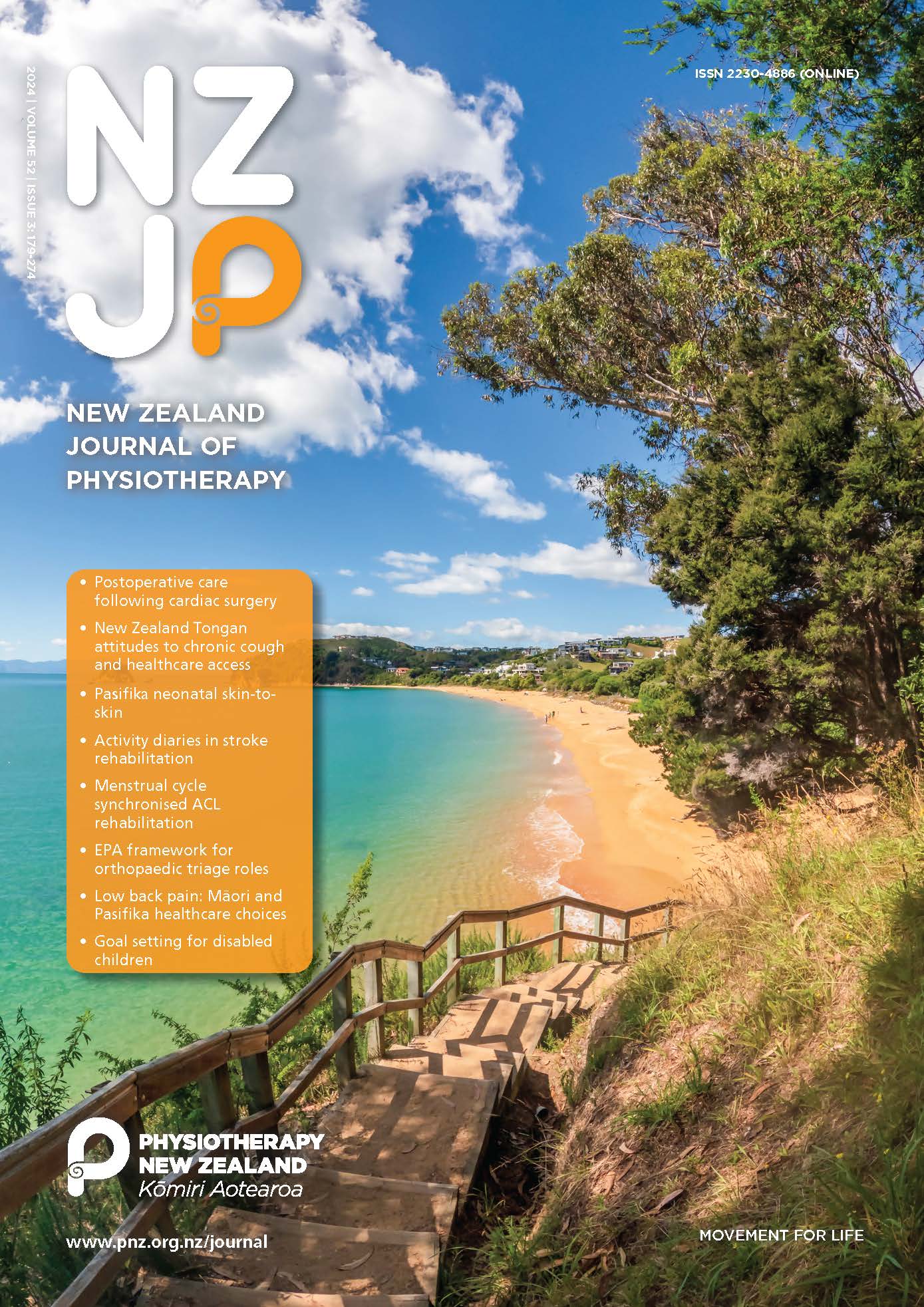The effect of menstrual cycle phase-based rehabilitation for females following anterior cruciate ligament reconstruction: A randomised controlled trial
DOI:
https://doi.org/10.15619/nzjp.v52i3.456Keywords:
Anterior Cruciate Ligament, Female Athlete, Menstrual Cycle, Rehabilitation, Resistance TrainingAbstract
Research reports that follicular phase-based resistance training, where females predominantly perform resistance training in the first half of their menstrual cycle (MC), appears to result in better responses than regular training. The objective of this study was to compare the effects of MC phase-based rehabilitation (MCPBR) versus usual care (UC), following anterior cruciate ligament reconstruction (ACLR). Forty-three females participated in a 12-week intervention commencing six weeks post-ACLR. The primary outcome was knee extension strength limb symmetry index (LSI), and the secondary outcome was self-reported function (measured using the Knee Injury and Osteoarthritis Outcome Score, International Knee Documentation Committee Questionnaire, and Knee Self Efficacy Scale), measured at baseline and endpoint. Participants were randomly assigned to MCPBR (n = 21) or UC (n = 22). Participants’ MCs were monitored using calendar tracking, basal body temperature tracking, and urinary ovulation testing. Thirty-six females provided data for the final analysis. The M (SD) knee extension LSI for participants following MCPBR was 81.2% (13.2%), compared to 73.5% (21.8%) for those following UC (p = 0.17). The M (SD) one repetition maximum knee extension of the injured leg was 38.8 kg (14.1 kg) following MCPBR and 30.4 kg (11.7 kg) following UC (p = 0.06). Self-reported function was similar between groups. The findings of this study show that MCPBR and UC result in similar knee extension LSI and function and therefore do not support the recommendation of MCPBR for ACL rehabilitation in a New Zealand context. Future research should investigate females’ experience of MCPBR following ACLR.


